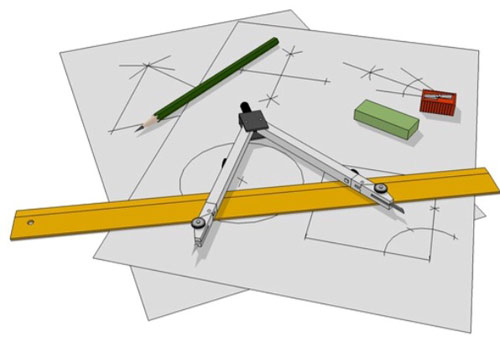constructible

In classical geometry, a constructible figure or length is one that can be drawn using only an unmarked straightedge and a compass. The Greeks were adept at constructing polygons, but the question of proving which regular polygons are constructible and which are not had to wait for the genius of Carl Gauss. At the age of only 19, Gauss found that a regular polygon with n sides is constructible if and only if n is a prime Fermat number. The only known such primes are 3, 5, 17, 257, 65537. It is also possible to construct certain numbers, known as constructible numbers, that correspond to line segments, including rational numbers and some irrational numbers, but no transcendental numbers.
It turns out that all constructions possible with a compass and straightedge can be done with a compass alone, as long as a line is considered constructed when its two endpoints are located. The reverse is also true, since Jakob Steiner showed that all constructions possible with straightedge and compass can be done using only a straightedge, as long as a fixed circle and its center (or two intersecting circles without their centers, or three non-intersecting circles) have been drawn beforehand. Such a construction is known as a Steiner construction.
The Greeks were unable to achieve certain constructions, such as squaring the circle, duplicating the cube, and trisecting an angle, despite numerous attempts, but it wasn't until hundreds of years later that the problems were proved to be actually impossible under the limitations imposed.


